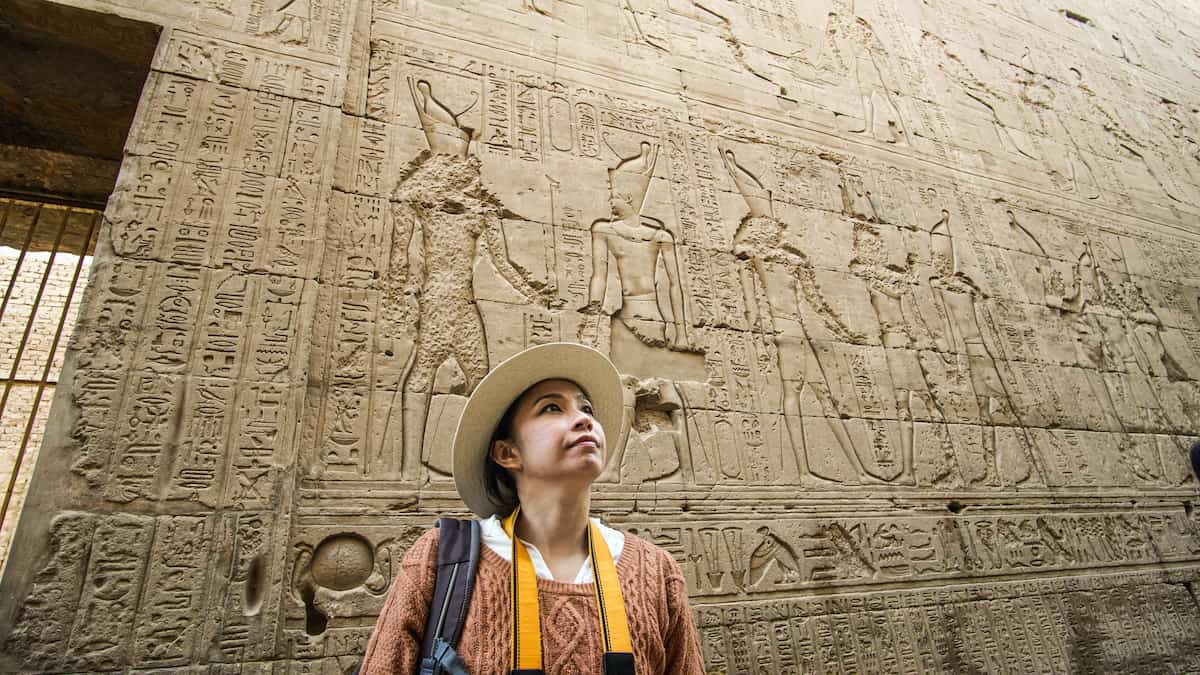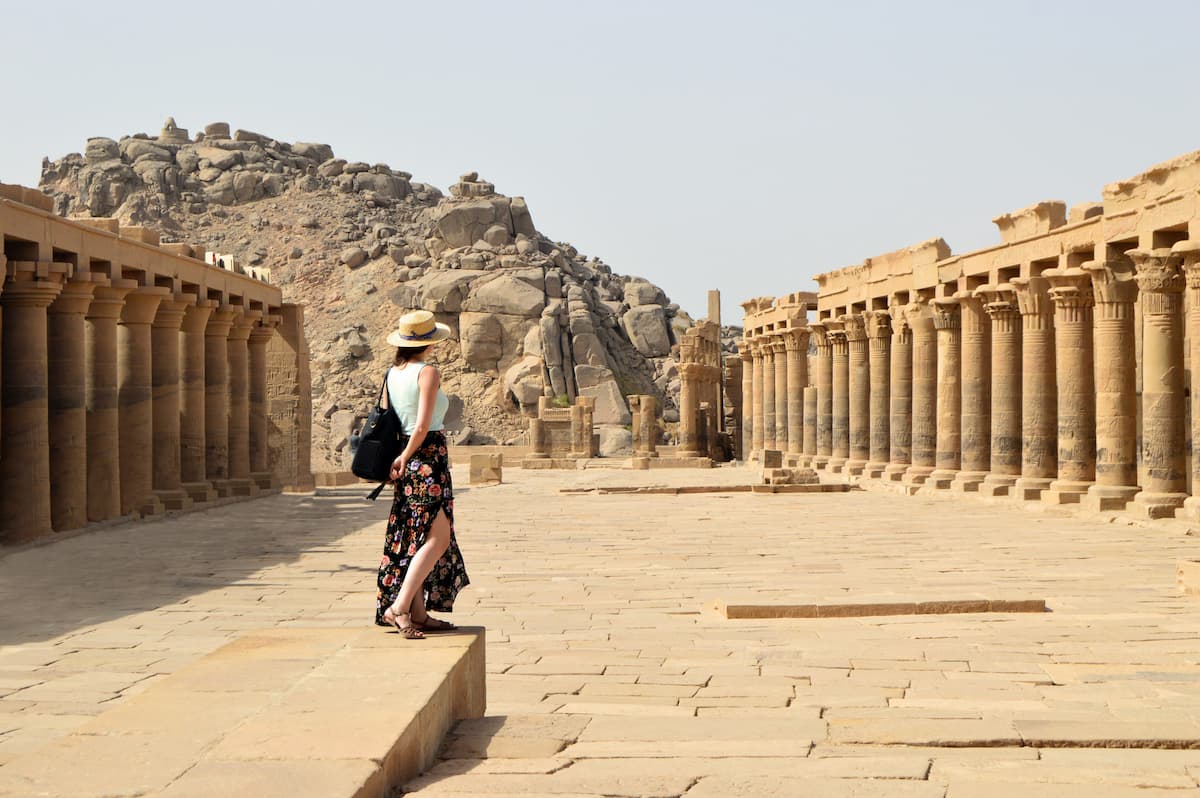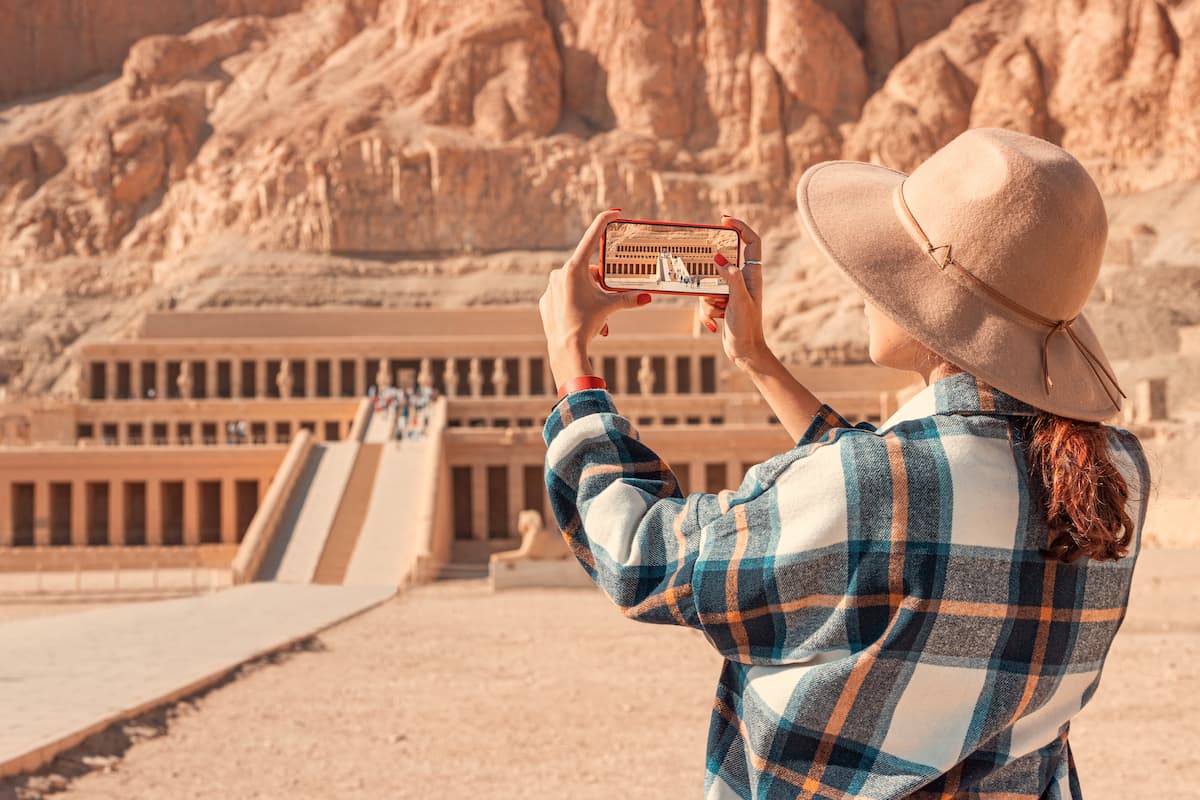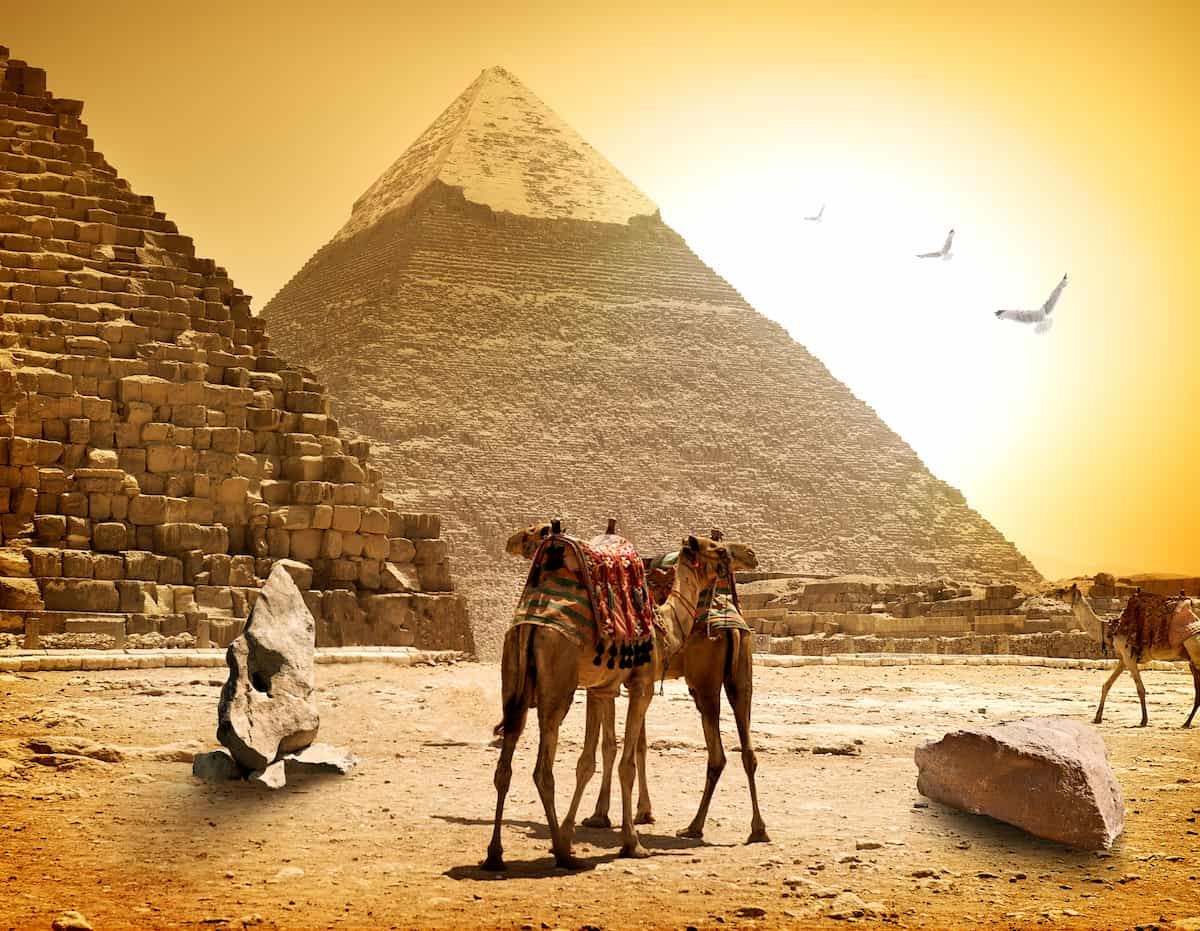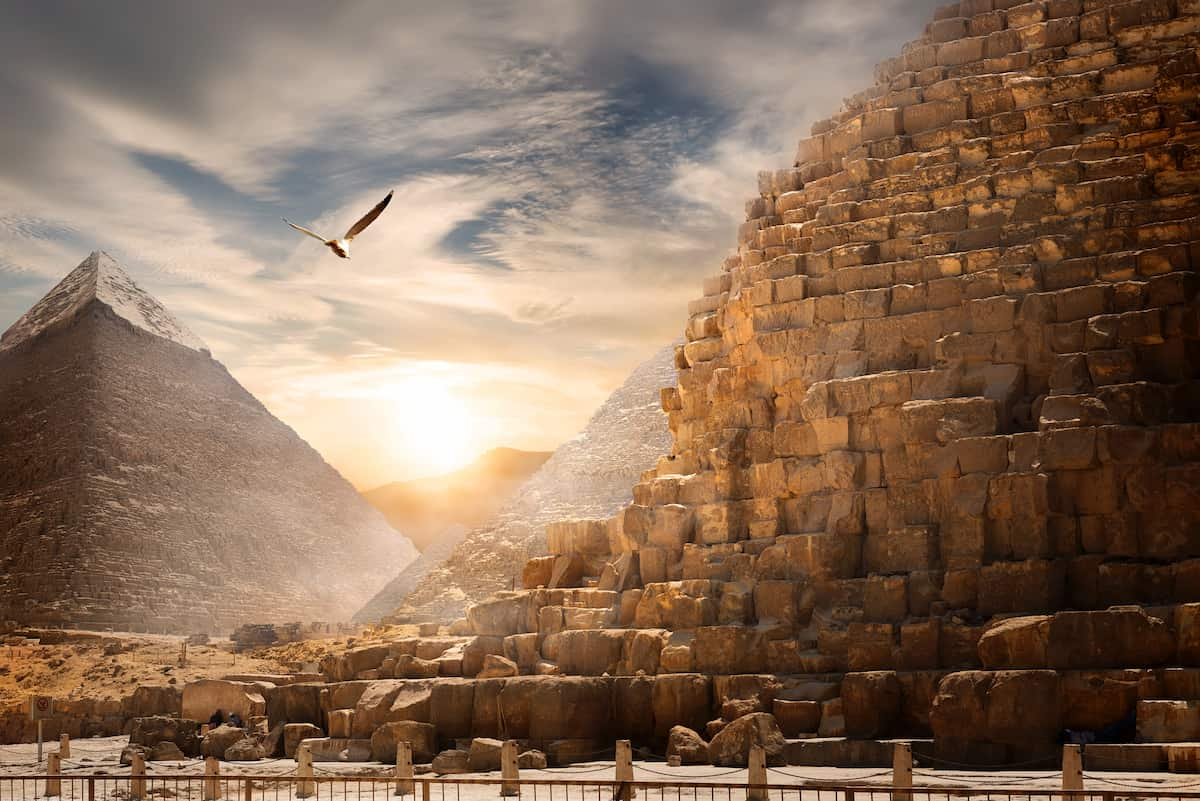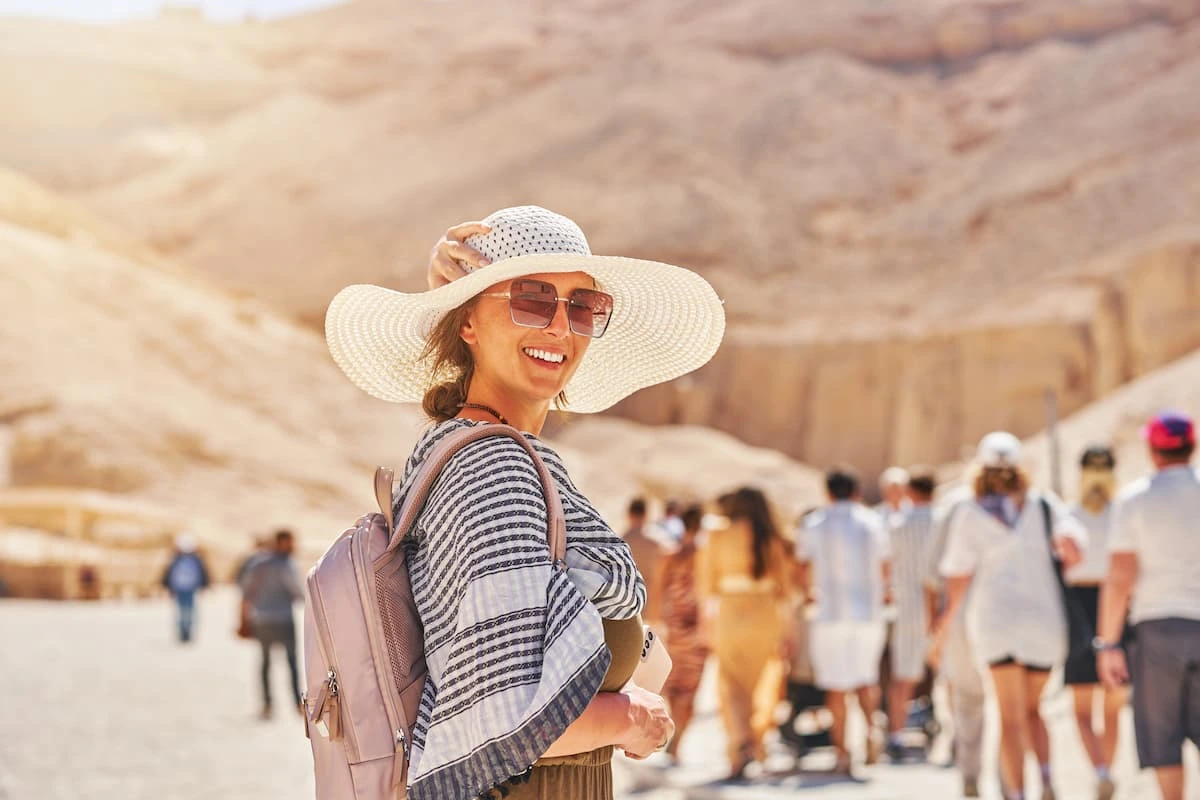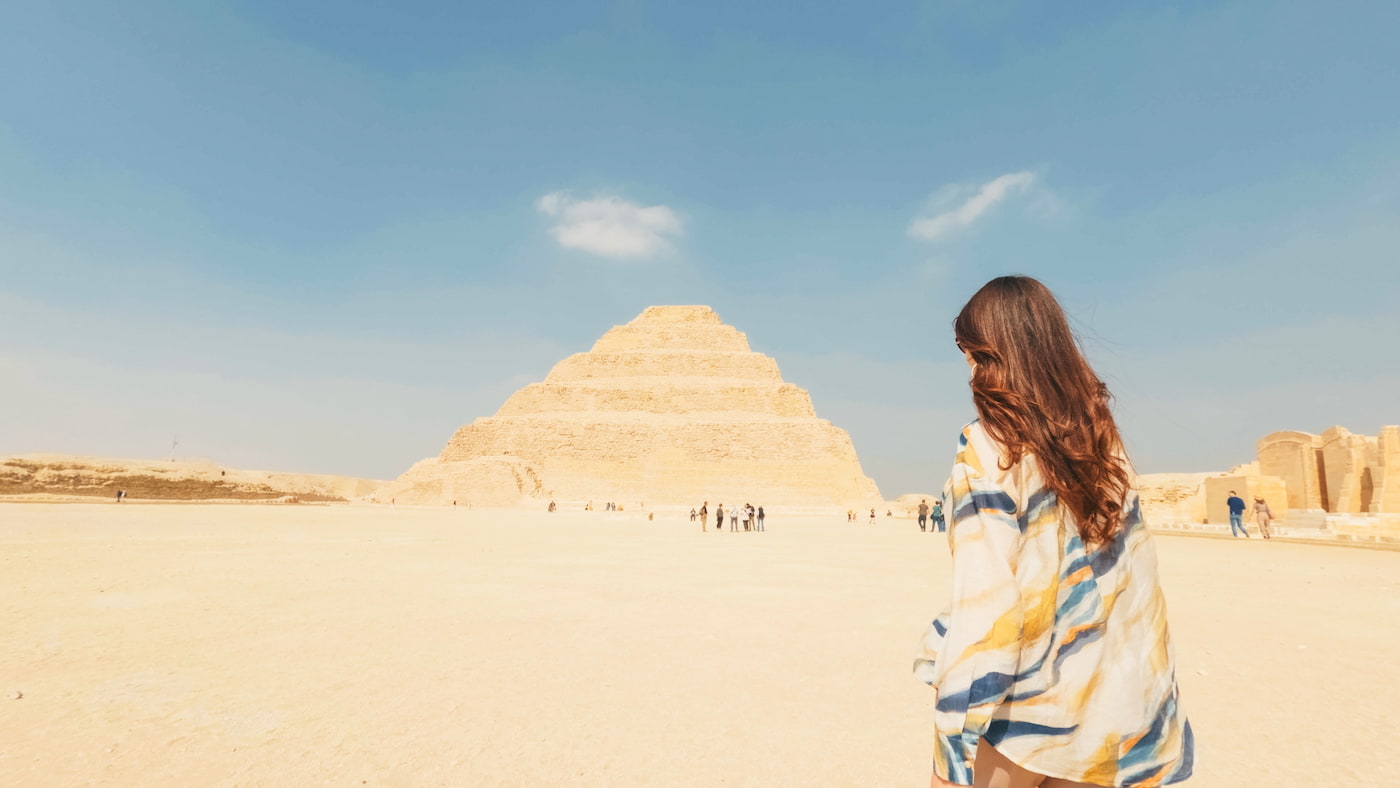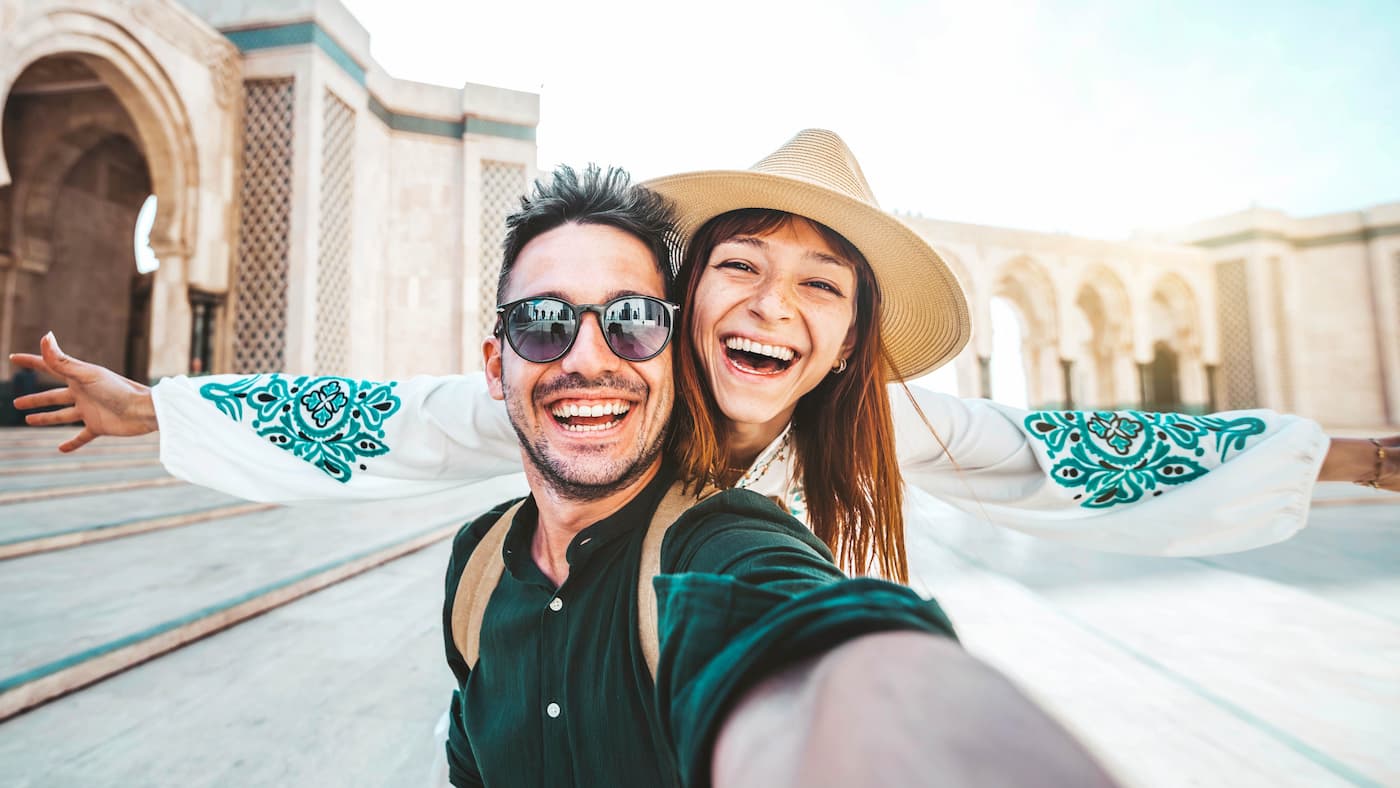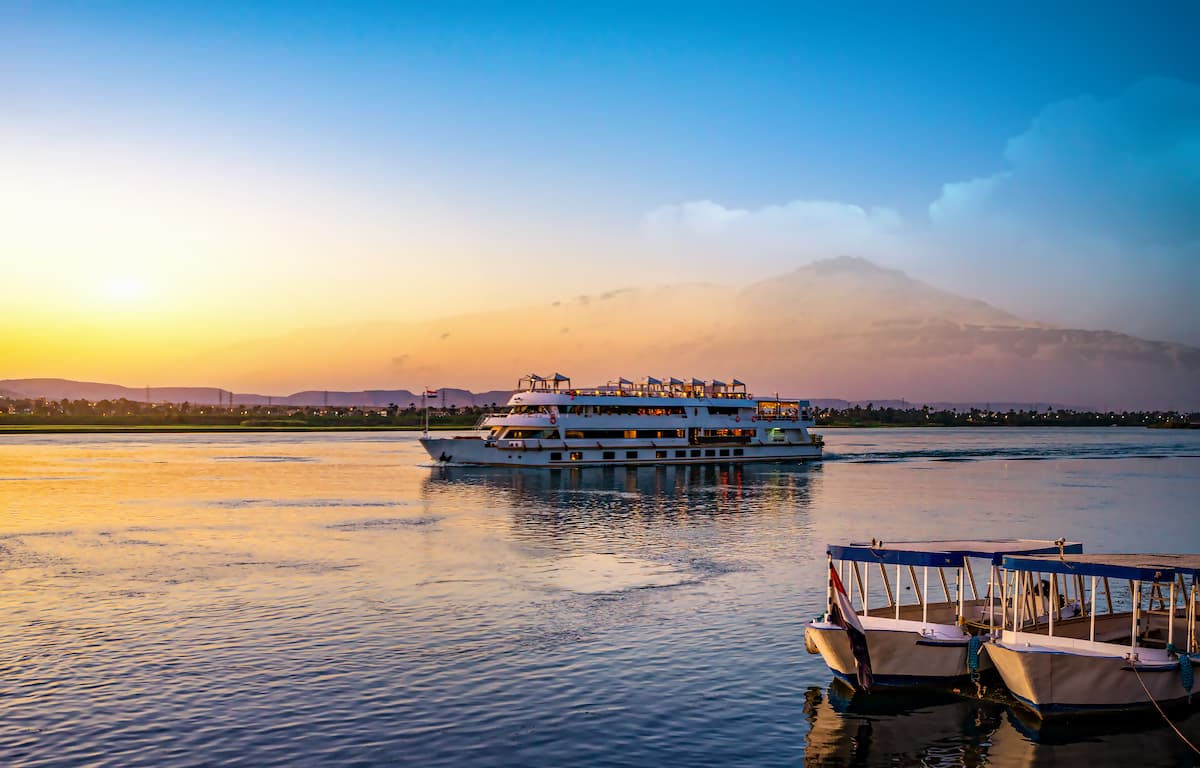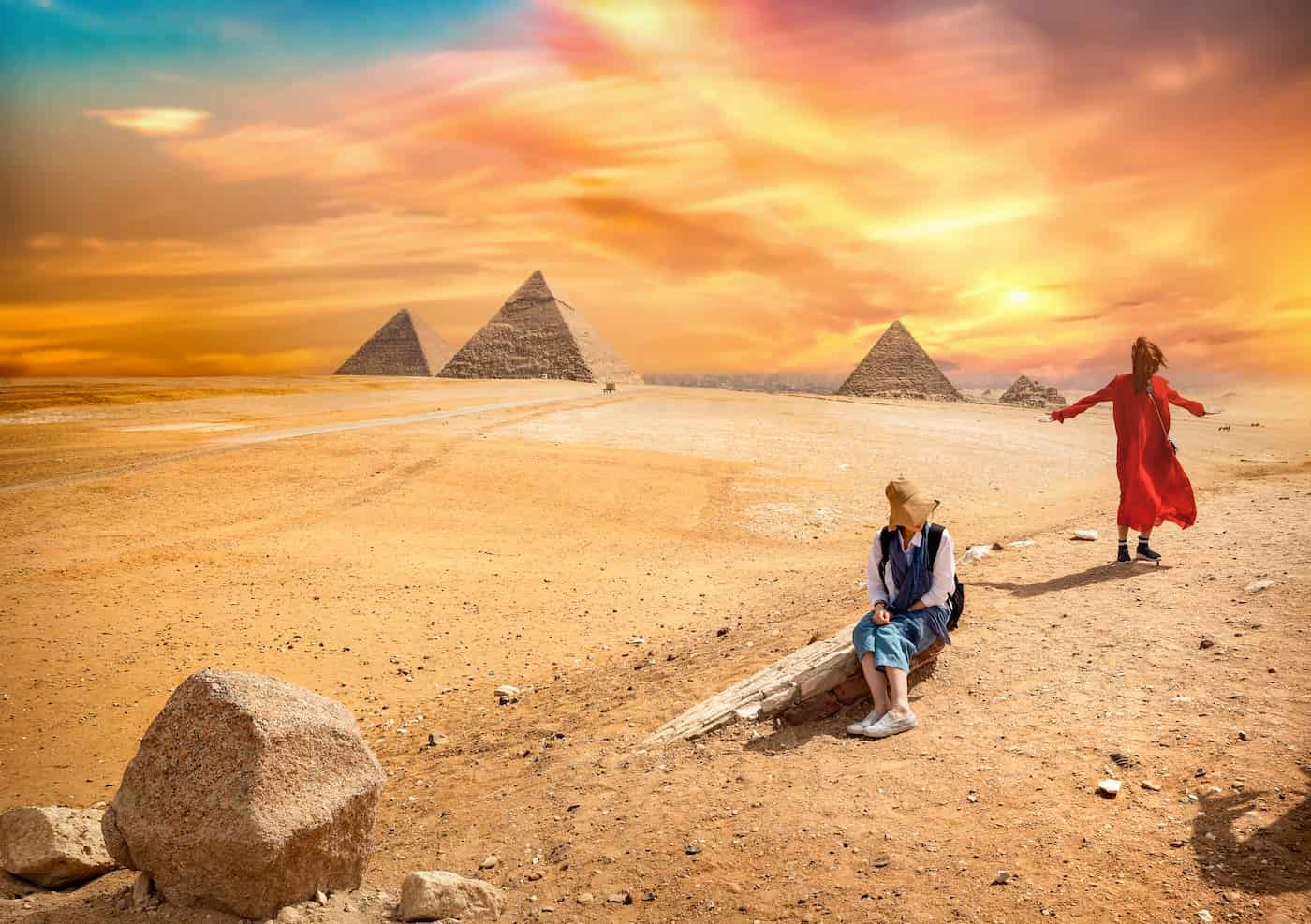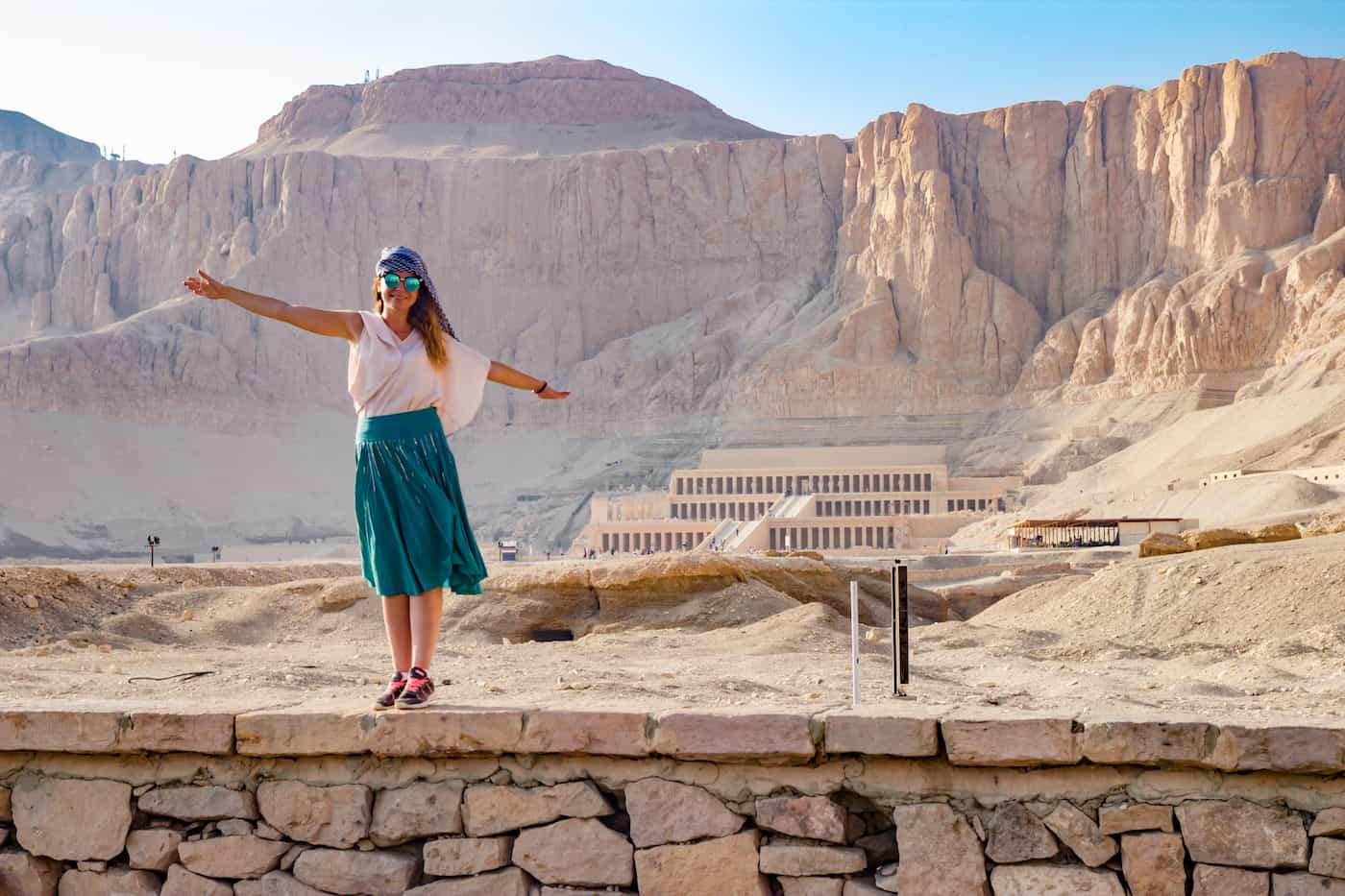10 Important Facts About The Egyptian Day of The Dead
During the ancient history many civilizations celebrated the Day of the Dead. Early August was the time of the Wag Festival in ancient Egypt (Thout in Coptic). Egyptian People would put little canob boat in rivers during this festival as a gesture to memorialised their departed loved ones as they travelled to The Afterlife and to mourn Osiris‘ passing. So, did the pharaoh celebrated the Egyptian day of the Dead?
In fact, priests carried out this complex procedure in order to ensure that the deceased may experience the afterlife with all of their senses. Purification, anointing, chanting prayers and spells, as well as touching the mummy with ceremonial artefacts to revive the senses, were all part of this process.
Death Meaning In Ancient Egypt
The ancient Egyptians believed that dying just marked the beginning of the next stage of a person’s everlasting journey, not the end of existence. Given that death was only a passage to another stage of one’s immortal existence, there was no term in ancient Egyptian that could be used to describe the idea of “death” as it is typically understood, which is the “ceasing to live.”

In fact, according to academics, the word for death in current Egyptian Arabic, al mawt, is the same as the word for “mother” in ancient Egyptian, making a strong connection between the death-experience and birth—or, more specifically, rebirth on an eternal level.
Where the Soul Goes?
The Field of Reeds is an eternal paradise where all that was lost at death is regained and one can genuinely live happily ever after. This is where the soul goes after successfully passing Osiris‘ judgement. People still feared dying even though the Egyptian conception of the afterlife was the most consoling of any ancient society. People were still scared of dying even during eras of strong central authority, when the monarch and the priesthood held full control and their belief in the paradise-after-death was universally acknowledged.

After Life In Ancient Egypt
The eternal satisfaction in life that Egyptians sought in ancient Egypt was the afterlife. They had the belief that the deceased can live in the underworld free from sickness. They began by mummifying the deceased as a means of preparing them for entry into the next realm. How did you like your new underground life?
Ancient Egyptian Gods of the After Life
Although there were a variety of afterlife beliefs, the majority held that the deceased would transform into Osiris. So, the Egyptians created shabtis, or miniature statues of Osiris, and interred them with the dead. The shabti might perform whatever tasks that the deceased needed in the afterlife.

Ra was a different deity participating in the other realm. He was the architect of the cosmos and the origin of eternal existence. Every nightfall, he would pass through the underworld, illuminating it like the sun.
Even though only pharaohs were thought to be related to Osiris and achieve afterlife before 2000 B.C., ordinary people began to be mummified to revive and join the afterlife after that. Consequently, the death market rose in size dramatically.
Ancient Egyptian Families Meeting In The Afterlife
In all of Egypt’s history, the customs associated with grieving the dead have remained mostly unchanged and are quite comparable to how Egyptians cope with death today. One may assume that the ancient Egyptians would have been more at ease with death if they had known their loved one was on a quest for eternal bliss or was already in paradise, but this is obviously not the case.

Inscriptions lamenting the loss of a cherished wife, spouse, kid, or pet all emphasise the sorrow of loss, how they miss the one who has passed away, and how they hope to see them again someday in paradise – but do not express the longing to die and join them anytime soon. There are writings that express the desire to pass away, but they do so to put an end to one’s present-day sorrows rather than to trade one’s mortal existence for the expectation of an afterlife in paradise.
Day of the Dead Celebration
We have grieved and honoured the deceased in a variety of ways throughout our history. The Wag Festival in ancient Egypt celebrated the spirits of recently departed people and their passage to the afterlife. Small papyrus boats and shrines were built by the ancient Egyptians and floated along the Nile.

Egyptian Book Of the Dead
The term “Book of the Dead” refers to a collection of ancient Egyptian funeral spells that guided the dead to the afterlife so they might be reunited with Osiris, the god of the dead.
A collection of mystical spells known as the Book of the Dead in ancient Egypt claimed to turn any living person into an eternal god in the afterlife. This more than 50-item exhibition investigates the meaning of the Book of the Dead. So, what it was thought to accomplish, how it operated, how it was created, and what became of it. Two magnificent Books of the Dead, one measuring 41 feet long, are included in the display and are presented completely for the first time in almost a century.
Book of the Dead Spells
A recreation of a burial featuring a rarely seen mummy demonstrates how the deceased was literally surrounded by objects inscribed with the Book of the Dead. Some spells being written on linen bandages. Others on amulets placed on the mummy, and still others on bricks embedded in the burial chamber’s walls. The exhibition exhibits the most recent findings on the Book of the Dead. So, what it meant to the ancient Egyptians, and how they attempted to live eternally as gods through its content and intricate iconography.
In fact, Hamlet in Shakespeare’s famous play perfectly captures the sentiment expressed in the majority of these ancient Egyptian texts. “The undiscovered country, from whose bourn/No traveller returns, puzzles the will/And makes us rather bear those ills we have/Than fly to others that we know not of” (III.i.79-82). Even with the type of heaven that their faith promised, the Egyptians loved life and celebrated it every day of the year. In addition, they also never forget to celebrate the Day of the Dead.
The Nile and the day of the Dead
Egyptians worshiped the Nile and they called him Happy, the God of the Nile. Every year they needed to gather the life symbols of the Nile with the after life in one day, the day of the Dead. In fact, the best place to celebrate it was the Osiron at Abydos Temple. Osiron was the holy spot where the God of the Dead Osiris was buried. Hundreds of boats sailed to The Orison every year carrying all Egyptians leaded by their Pharoah. This was to stay their and celebrate the day of the Dead.
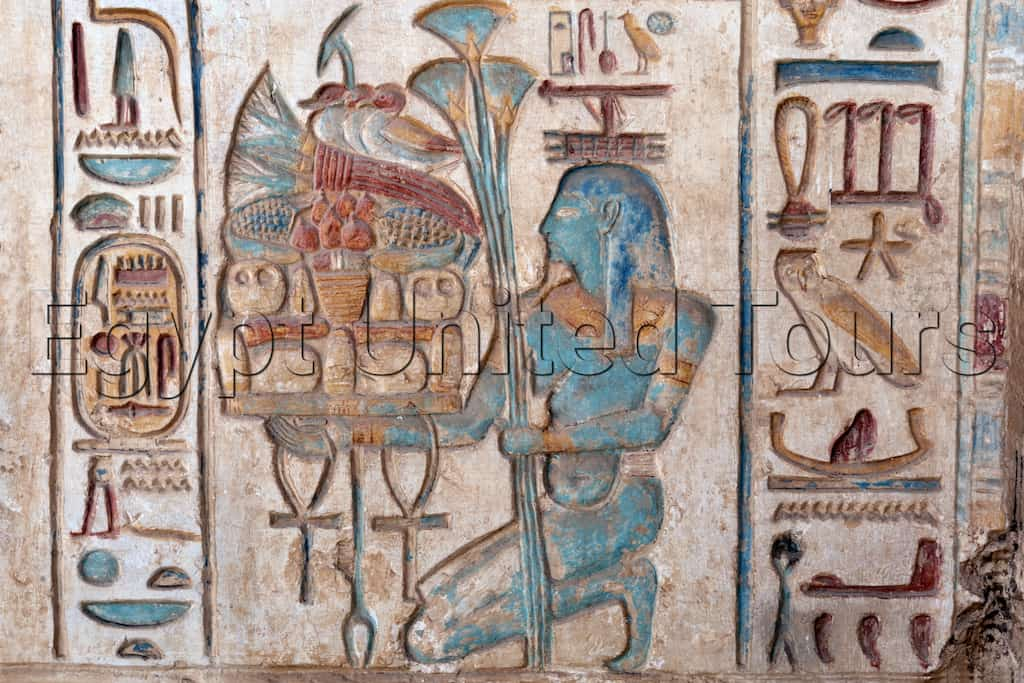
Festivals of The Dead Around The World
Ancient Mexican taking the Day of The Dead from Egyptians
The oldest origins of the Day of the Dead in Mexico, also known as Da de Muertos, may be found among the Aztecs in what is now central Mexico. A millennia before the Day of the Dead celebrations, the Aztecs used skulls to honour the dead. In a custom that has persisted for more than six centuries in the yearly festival to honour and converse with those who have passed away, skulls, like the ones that were formerly erected on Aztec temples, continue to be a prominent emblem. Similarly, Egyptians have honored the Dead Day and Mexicans later believed in the same idea.
Common Festivals and Rituals
In these rituals, participants create altars in their homes filled with offerings to the spirits of those they love. Photos of the deceased and other artefacts left behind are lit with candles. Families recite poetry and letters, share experiences, and crack jokes about the deceased. Bright orange or yellow cempaschil flowers, marigolds, whose potent aroma aids in guiding the spirits home, are lined up alongside offerings of tamales, chiles, water, tequila, and pan de muerto, a special bread for the occasion.
To summon the spirits, copal incense, which was utilised for rites in earlier times, is lighted. Names of the departed are scrawled across the foreheads of clay-molded sugar skulls. It have been painted and embellished with feathers, foil, and frosting. All four elements of life are represented on altars: water, earth’s sustenance (food), fire (light), and wind (papel picado, colourful tissue paper folk art with cut-out motifs to stream over the altar or wall). A Christian crucifix or a picture of the Virgin of Guadalupe, Mexico’s patron saint, may also be found at some families’ altars.
Festival of the Dead in Africa
Africans are renowned for having deeply ingrained cultural practises and beliefs, some of which can be cruel and bizarre. The Chewa’s festival for the dead stands out as one of those customs that many find shocking.
Famadihana
A ceremony when participants in Madagascar dance with the deceased. A number of departed family members are exhumed from an ancestral crypt as part of this holy ceremony, which takes place every five to seven years. Family members who are still alive meticulously remove the bodies’ burial robes before wrapping them in brand-new silk shrouds.
Day of the Dead Now In Europe
Ireland is where the Day of the Dead celebrations first appeared in Europe. Halloween celebrations in the west have their roots in “Samhain,”. A Celtic event that takes place on October 31 and signifies “the end of the harvest.” It symbolises the time when peasants would prepare their supplies. In addition, to give up the cattle they would need to survive the winter. They would construct massive bonfires to frighten away evil spirits and keep the living safe.
Halloween festivities today are much more paganic and gastronomic in nature. Irish people generally consume Barm Brack, a traditional fruitcake that, like the Roscón de Reyes in Spain, also has a secret reward, at this time of year. A ring buried inside the cake portends a forthcoming wedding, while a straw portends a fruitful year. The Irish also consume Lambswool, a traditional cider-based beverage, along with their barm brack.
India Day of the Dead
Although Day of the Dead is not observed in India, Mahalaya, a Hindu celebration, is quite comparable. It’s a day in early November when people can communicate with their ancestors. Indians offer prayers for the souls of the departed in an effort to prolong their slumber for another 12 months.
Hindus consider this is the time of year when the souls of the dead come to earth, which is similar to the ideas underlying the Day of the Dead. The ghosts will stay in the human world if they aren’t placated. Even though this is only a religious event, it’s interesting to see how different civilizations celebrate the same occasion.
United States Celebrating The Day of The Dead
Halloween, also known as All Hallows’ Eve, was brought to the US straight from Ireland and has since grown to rank among the most significant national festivals and yearly celebrations worldwide. The liturgical meaning of Halloween as a day to honor the dead has not changed. However, the majority of people associate Halloween with carved pumpkins, skulls, spider webs, and a day to wear black and orange clothing.
Movies and television have made it commonplace to dress up as monsters, ghosts, zombies, and various otherworldly creatures. Trick-or-treating is the highlight of Halloween for kids. On this day, they dress up in costumes and visit their neighbours’ doors to beg for candy and other treats.
Modern Day of the Dead in Egypt Now
Now in Egypt the Day of the Dead is the day when a person passed away. Egyptians have a propensity to bury their deceased as quickly as feasible. They are doing this in part to avoid embalming the body. After all, according to Islamic principles, the relatives shouldn’t disturb the body. Additionally, they advise Muslims to wash the body well and wrap it in kafan, a particular white fabric used for funerals.
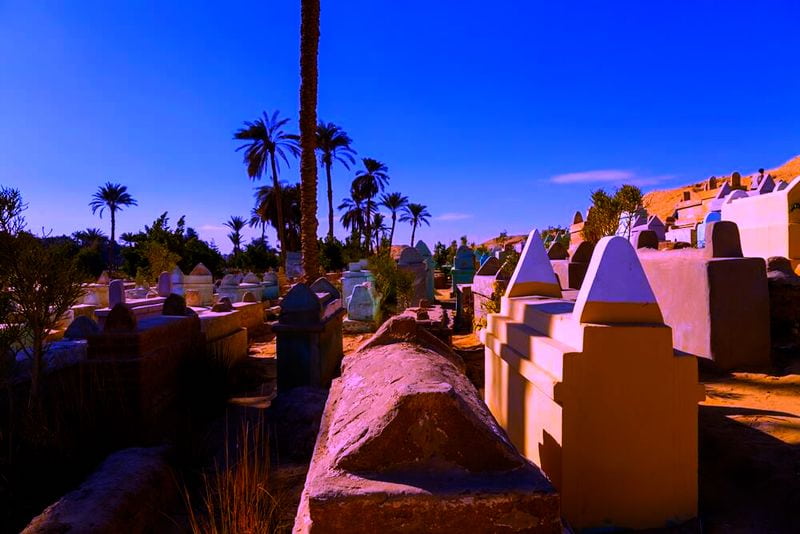
Egyptian Islamic Tombs
In addition, the funeral prayers, or janazah, are always performed in a mosque under the direction of an Imam. The men carry the body to the family tomb after the Imam has completed the janazah. The body is required to face Mecca at all times, much like in other Islamic customs across the world. Another uncommon practise among Egyptians is the usage of tombstones or other burial markers.
In addition to all of that, there is a 40-day formal time of mourning. Family members of the deceased offer special prayers for the soul of the departed at this time. Last but not least, the typical price of a contemporary Islamic funeral in Egypt ranges from 300 to 2.500 USD.
Conclusion
The Ancient Egyptian Day of the Dead was taken from Egypt culture and believes to many other civilizations. Similarly, those new inhabitants of the World have taken the old Egyptian rituals and added on it. However, it will always refer back to Ancient Egyptians day of the dead.


